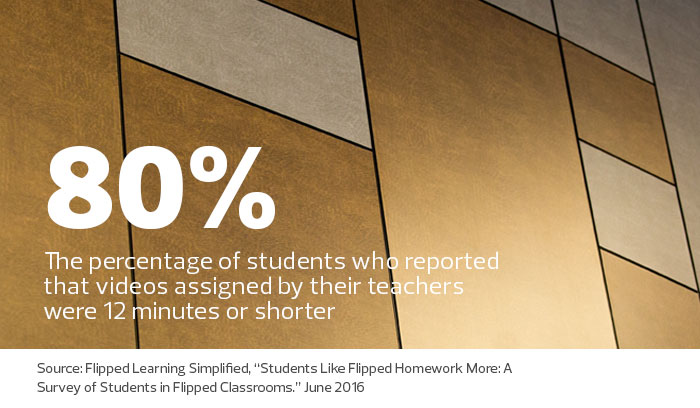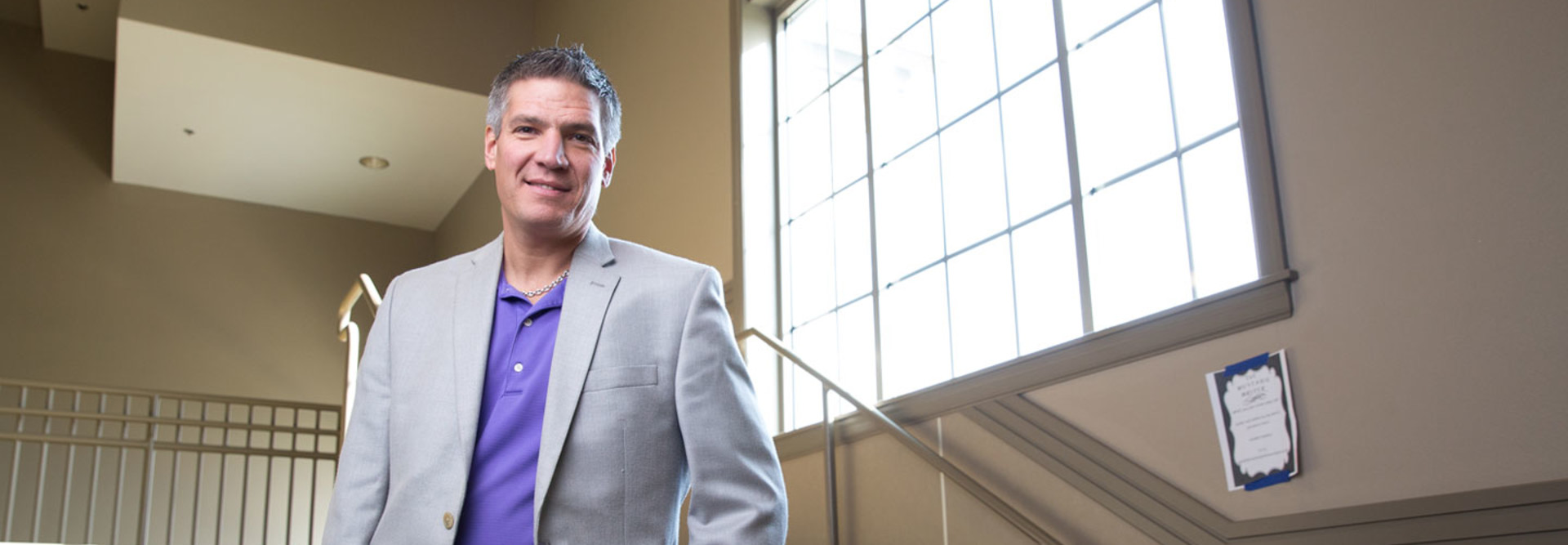Teachers Use Flipped Classroom Tech to Make the Most of Student-Teacher Time
Brian Gervase’s perspective on flipped learning has evolved since he first tried the model in his precalculus classes in 2009.
“At first I sent home videos of my lessons and spent class time doing math with students, and thought of that as the flip,” says Gervase, coordinator of instruction, technology and assessment at Lammersville Unified School District in Mountain House, Calif. “Now I think the flip is that, instead of a teacher-centered classroom, we have a student-centered classroom. Flipped learning is anything that creates better interactions between students, and between students and teachers.”
In a flipped classroom, teachers assign short videos of their lessons for students to view at home, or sometimes in class while the teacher works with other learners.
During class time, students work, either individually or in small groups, on activities that reinforce the lessons (while the teacher circulates to offer help and suggestions). Personal computing devices like notebooks, desktops and mobile gadgets; learning management systems (LMSs); streaming video services; and other technologies enable the switch and deliver content and activities to make the model work.
Ideally, students bring their own insight and questions to share with the class, building skills in collaboration and critical thinking, and creating more individualized learning experiences, says Associate Professor Linda Mensing Triplett, director of middle and high school programs in the Graduate School of Education at Lesley University in Cambridge, Mass. But flipped learning only works when teachers take on extra preparation and students take responsibility for their own learning, she says.
“Standing in front of the classroom, you’re the expert,” Triplett says. “Our goal is to make students the experts on their own learning, with help from technology and coaching from the teacher. You have to ask them to do the work. And you have to be superprepared.”
Using Tech to Provide Timely Support
When Gervase first flipped his math classrooms, he hosted videos on LMS servers. Most students had access to the internet at home, but some viewed the videos after school in the library, and Gervase burned DVDs for others. Now teachers in Lammersville USD, which has six schools and approximately 4,600 students, can upload their content to a free YouTube channel as part of their use of G-Suite. The district has also launched a one-to-one program with Dell Chromebooks that extends from the high school down to fourth-grade classes.
The LMS and applications such as Formative provide ways for teachers to distribute content and also track the day-to-day progress of individual learners, Gervase says. “We want to be able to see how they’re doing, one student at a time,” he says. “When someone doesn’t understand something or is making a mistake, we want to react quickly.”
In Gervase’s current role, he coaches teachers on how to deploy flipped strategies and use technology effectively in their classrooms. Having a dedicated position to provide training and support for teachers helps ease adoption of flipped learning in particular, and blended learning in general, he says.
Helping Students Learn at Thier Own Pace
By 2012, it no longer made sense to English teacher Cheryl Morris to send her seventh-graders home with work for which they most needed support. “Reading and writing are the skills my students need the most, and they are the hardest things for them to do by themselves, so why was I assigning them as homework?” says Morris, who teaches at San Jose Middle School in the Novato Unified School District in suburban San Francisco.

Now Morris makes short videos of herself discussing and reading assigned texts and posts them on her YouTube channel and Google Classroom, along with PDFs of the selections. Students can choose to do the reading themselves or watch Morris on video, either at home or in class. Carts of either Acer Chromebooks or other tablets are available from the school, and some students use their own devices. During class time, learners choose their activities, with Morris circulating among them to offer help and stay aware of how they’re doing.
Flipped learning requires more preparation and time to master the technologies, says Morris. But since she flipped her classroom, the failure rate among her students has dropped from around 10 or 15 percent to zero, as measured against department benchmarks.
Morris, who co-moderates the #flipclass Twitter chat, says it’s important to reach out to other practitioners. “Teaching is messy, and we have to be willing to ask for help, especially with sharing resources available through the internet,” Morris says. “We’re teaching our students to learn collaboratively, and we need to do that ourselves.”
Creating More Engaging Classroom Time
Four years ago, Ed Ventry and Amy Kilmer flipped their math classrooms at Niagara Falls (N.Y.) High School. Ventry was looking for a way to reclaim classroom time from the relentless slog of reviewing the previous night’s homework, and Kilmer wanted better results for her geometry students.
Kilmer now teaches at Coral Springs (Fla.) High School and has flipped her new classroom because she “can’t teach any other way now.” She continues to have conversations with Ventry about teaching and learning long distance.
Ventry had been recording videos of lessons with a tablet that wirelessly projected written work to a whiteboard or interactive display, then transferred them to a notebook before uploading them to YouTube. A new Lenovo notebook with built-in webcam issued by the high school will streamline that process, he says. Niagara Falls High, which has about 2,400 students, has also launched a one-to-one program with carts of Lenovo Yoga 11e notebooks for students.
Coral Springs High provided Kilmer with a Yoga notebook. She posts her videos on the school’s Canvas LMS and also uploads them to YouTube, an easier stream to students at home.
Addressing Digital Equity Issues
In the classroom, Kilmer’s students can use their own devices and have access to Yoga notebooks from carts. Teachers can check out Promethean interactive whiteboards, handheld slates and student voting systems, in addition to an LCD projector and a document camera in each classroom. Like Ventry, Kilmer puts the lessons on flash drives for students without home internet access.
Both teachers say they see better results in student learning and, despite extra work, more satisfaction for themselves as they have increased interaction with students.
“Before I flipped my classrooms, I thought my students were prepared, but now I know what each of them knows and doesn’t know, and I can address the gaps,” says Ventry. “It has rejuvenated my career.”








